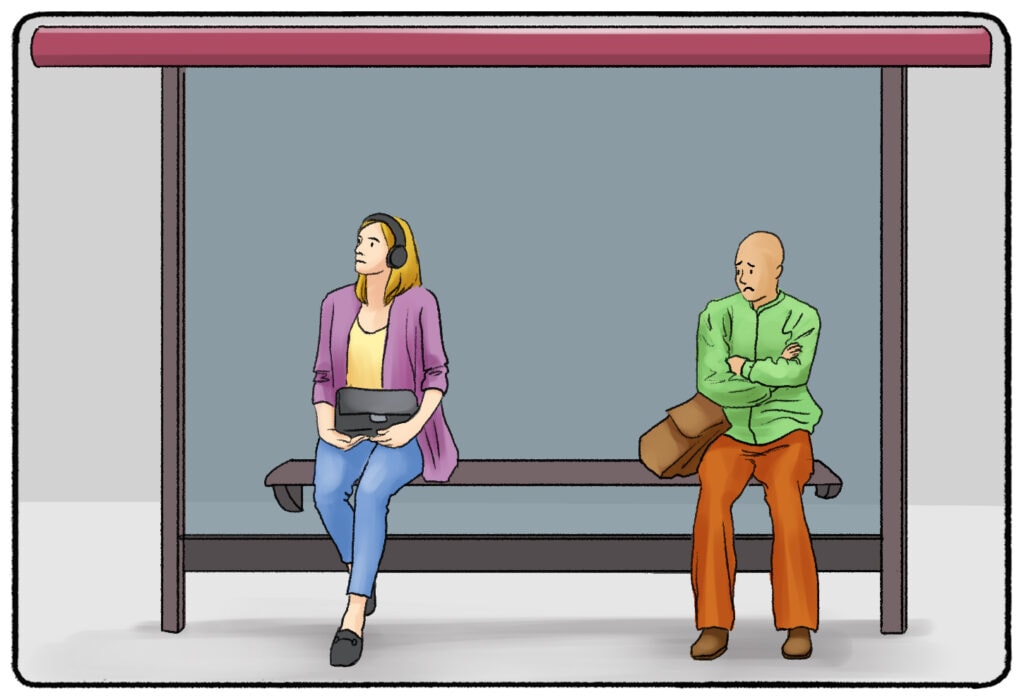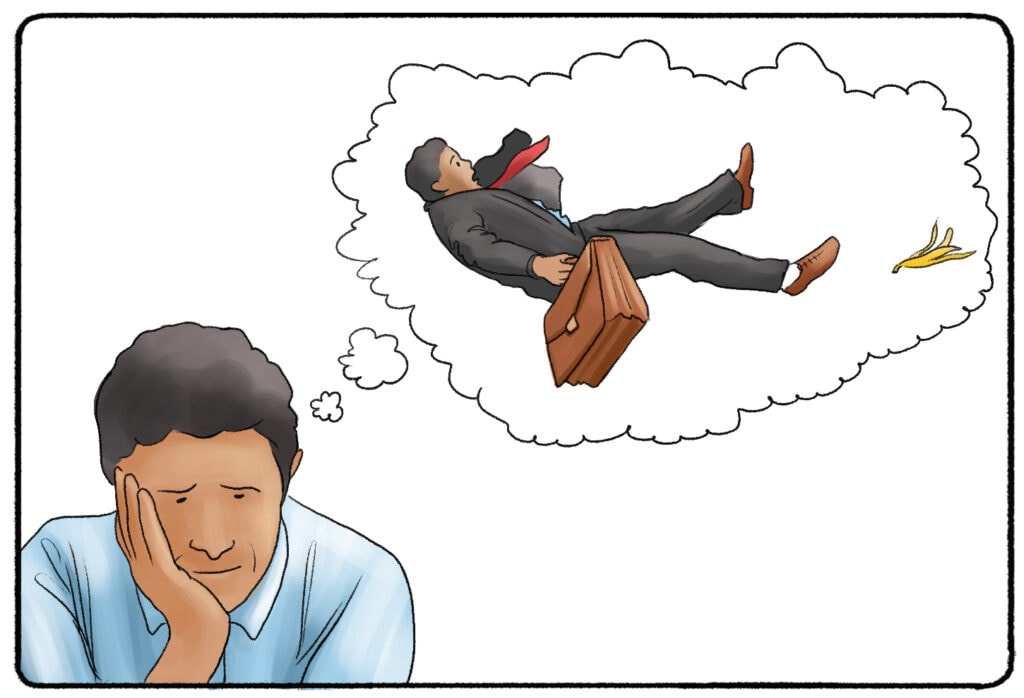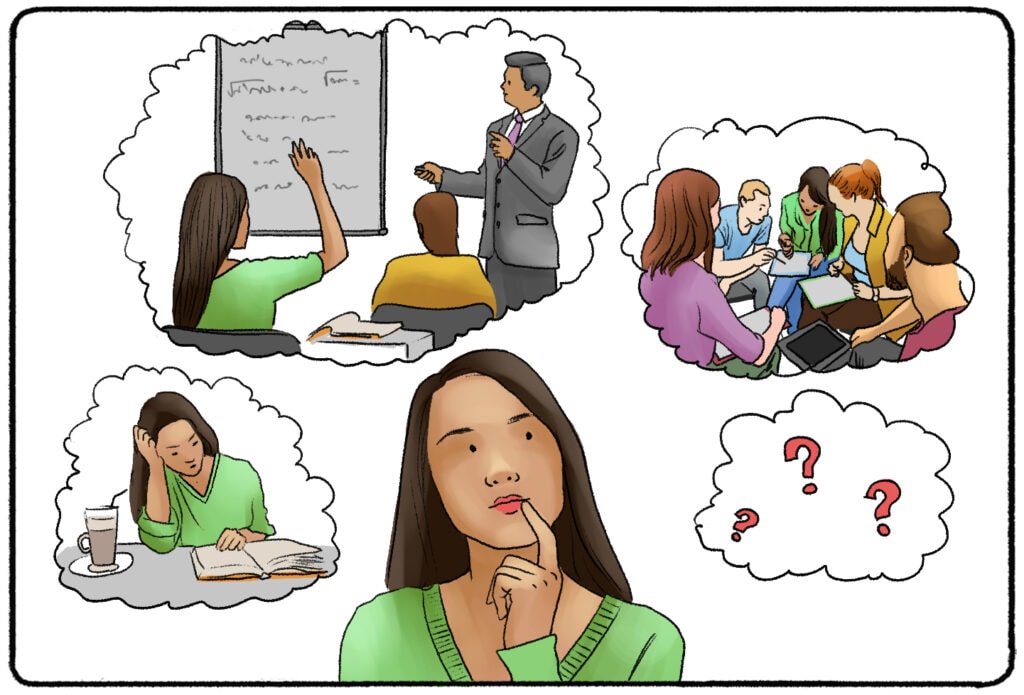What you see is what you get - or is it?
Our minds are powerful. They take in, hold, and remember so much information! The sights that we see, conversations we have, and media we consume shape our reality. Once we’ve gathered data, observations, or stories, we use this information to make assumptions and decisions about what’s coming next. We trust these assumptions and our ability to make decisions.
But humans aren’t perfect. Our minds are far from perfect. We frequently encounter cognitive distortions that create a new reality for ourselves: one that might be very far from the objective truth.
What Are Cognitive Distortions?
Cognitive distortions are tendencies or patterns that twist your thinking. They paint a false or inaccurate picture of the world around you and why people might make certain decisions. If you get too caught up in cognitive distortions, you may be more likely to suffer from anxiety or depression.
One of the goals of cognitive behavioral therapy (CBT) is to undergo cognitive restructuring. During this process, you and a therapist look at the cognitive distortions that are shaping your worldview or causing you distress. You unravel them, step away from them, and replace them with patterns of thought that are more objective.
History of CBT and Cognitive Distortions
In the 1960s, Aaron Beck flipped the therapy world on its head. Previous forms of therapy focused solely on childhood trauma or certain behaviors that may have led to mental illness or other disorders. Beck’s idea of Cognitive Behavioral Therapy, or CBT, is different.
CBT is more concerned with the way that a patient talks to themselves through different situations. When you encounter a situation, you may talk yourself through it. You identify emotions and physical feelings, while planning some sort of action to respond to the situation.
Your thoughts, emotions, and feelings are all tied together to create a narrative and reality that influences your decisions. Certain tendencies, or cognitive distortions, are also tied in to this narrative. Experts within CBT have identified these tendencies and labeled them as “cognitive distortions.”
Cognitive Biases vs. Distortions
The idea of cognitive distortions sounds very similar to another phrase used in CBT: cognitive biases. Cognitive biases, like the Gambler’s Fallacy or the Confirmation Bias, come into play when we are making decisions. They have more of an influence on behavior than our overall mindset. Cognitive distortions are more generalized, shaping the way that we see the world and our mindset about what is going on.
Cognitive biases and distortions both play a role in steering us down the wrong path. They are natural and affect everyone, but they should still be understood. If you can step outside of a bias or distortion, you will be more likely to make an objective, fair decision.
Examples of Cognitive Distortions
Cognitive distortions are extremely common. You may recall a time where each of these distortions affected your thinking or the thinking of a friend. They might come up in Facebook arguments, conversations around the dinner table, or in popular stories.
As I go through this list, remember that we are all guilty of letting these distortions shift our thinking. We can also make harmless decisions or be happy while still being affected by these distortions. Moving forward, just try to be more aware of these patterns and do not let them prevent you from seeing the world as it truly is.
Personalization
Has anyone ever told you that you are taking things too personally? Well, you might be guilty of letting personalization cloud your judgement.
Personalization occurs when you link an event or a situation to you, even if you really did nothing to cause it. This can result in anxiety, depression, and fights over absolutely nothing!
Here’s an example. You introduce yourself to someone at the bus stop, and they completely blow you off. Personalization may tell you that it’s your fault that the person blew you off: maybe you came off too aggressively, you didn’t put on deodorant that day, you give off bad vibes, etc. But the person’s behavior could have nothing to do with you. Maybe the person was in a bad mood, or they are hopping on the bus after getting fired from their job. Maybe they are hard of hearing, or they are so focused on something out of your control that they don’t notice anyone at the bus stop.

One of the most popular self-help books is The Four Agreements by Don Miguel Ruiz. The second agreement is “Don’t take anything personally.” This is a good agreement to live by, especially if you find yourself trapped or upset by personalization.
Jumping to Conclusions
Do you know how someone is going to react to a certain situation? You may tell yourself that you know a person really well, but you might actually be jumping to conclusions.
Jumping to conclusions happens in two ways: mind-reading, and fortune-telling. Let’s say you failed a test. You know that your parents are going to yell at you and be disappointed in you if you tell them. But do you really know this? Your parents may just shrug the incident off and remember the times that they’ve failed tests. Until you get their response, you are just jumping to conclusions.
Fortune-telling is a similar tendency. Before the test, you might anticipate that you are going to do poorly. The test is going to be extremely hard! What is the point of studying, you tell yourself, when you’re just going to fail in the first place? This example shows how jumping to conclusions and other cognitive distortions can hold us back.
Catastrophizing
How much impact does your mistakes have on your overall performance and skills? If you have a tendency to catastrophize, your mistakes may be more impactful in your mind than they are in reality. Catastrophizing, also known as magnification, “zooms in” on a single mistake, slip-up, or negative occurrence. Suddenly, this one incident defines your entire identity, life, or personality. All you can think about, or “see,” is one or two mistakes.

Similarly, “minimization” is the process of shutting out or ignoring achievements. Let’s say you win an award for your writing in school. Minimization doesn’t put much weight into the award, even if it’s a great honor. You continue to think that you are a poor writer.
All-Or-Nothing Thinking
This is also known as “black-or-white” thinking. She loves you or she hates you; there is no in-between. You are a failure or you’re a success: there is no in between. Certainly, there is a lot of “wiggle room” in many areas of life! But if you refuse to see the “grey areas,” you may find yourself seeing you, friends, or the world in an extremely negative light.
Overgeneralization
Our brain is always looking for ways to make its job easier. The mind will look at one situation and apply it to every situation like it. This cognitive distortion is called overgeneralization. When overgeneralization fails to work, you may find yourself extremely frustrated, confused, or upset.
Here’s an example. You have to study for an exam, but life gets in the way. You decide to cram all night without any sleep, and you get an A! Your mind overgeneralizes the situation and decides that if you pull an all-nighter before an exam, you will get an A every single time. Sometimes this works, but sometimes it doesn’t. When it doesn’t work, you end up tired and frustrated because you didn’t get any sleep and you didn’t get a great grade.
These are just a few examples of cognitive distortions! Other cognitive distortions identified by CBT experts include:
- Mental filters
- Emotional reasoning
- “Should” statements
- Labeling
- Blaming
- Fallacies of fairness or control

How Cognitive Distortions Cause Emotional Distress
Cognitive distortions may lead us into a spiral of negative thoughts toward ourselves or others and they’re hard to step out of. Even when you are aware of cognitive distortions, biases, and other tricks of the mind, it is hard to believe that your “reality” is not the same as someone else’s. This Reddit post shows how a simple situation can lead someone to overthinking.
Stay mindful, stay alert, and remember - not everything is what it seems to be.
How to Step Out of Cognitive Distortions With Cognitive Restructuring
Cognitive restructuring is the process of identifying and reframing cognitive distortions that might be clouding your thinking. Here’s an example of this in action.
Let’s go back to the example of the exam. Sure, you had one or two experiences where you pulled an all-nighter and found yourself scoring high on a test. But let’s find other ways to reframe this situation. The all-nighter is not necessarily the cause of your high score. Maybe the test materials were particularly easy. Maybe you had been alert in class when the instructor went over the materials. Maybe you had attended study groups and engaged in different studying techniques a few days before the test. You might have to get creative to reframe your thinking and step out of cognitive distortions. When you do this, however, you see how complicated the world can be. Nothing is necessarily black and white.
The best way to draw objective conclusions is to keep your mind open, communicate with others clearly, and experiment. If you need additional help stepping away from cognitive distortions, reach out to a mental health professional trained in CBT.



